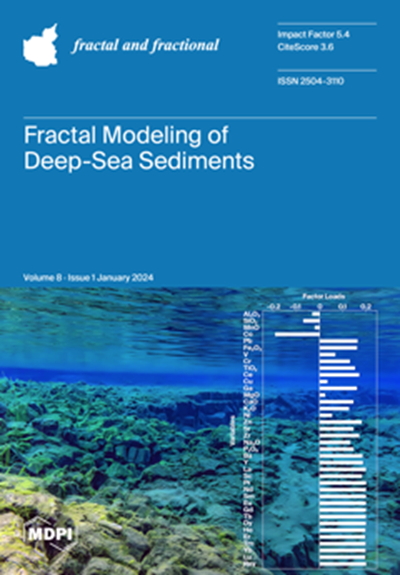骨料分形级配对再生混凝土力学性能和耐久性的影响
IF 3.6
2区 数学
Q1 MATHEMATICS, INTERDISCIPLINARY APPLICATIONS
引用次数: 2
摘要
再生粗骨料的组成和粒径分布对再生骨料混凝土的性能有影响。本文设计了七组具有不同骨料分形维数(D)的RAC和一组天然混凝土(NAC)。测定了D对RAC工作性能、抗压强度、抗氯离子渗透性和抗碳化性能的影响。研究发现,D值的增加导致坍落度和坍落度降低,抗压强度和氯离子渗透性先增大后减小,碳化作用逐渐下降。通过考虑D和固化年龄两个参数的强度模型,确定了最佳分形维数为2.547。此外,还提供了相应级配的每种粒径的质量百分比。RAC(D=1.0)的抗压强度和抗氯渗透性相对于RAC(D=2.5)分别提高了16.7%和13.3%。此外,RAC(D=2.5)的碳化深度与NAC的碳化深度相当。此外,RAC的抗碳化性能受到RCA的尺寸分布和天然碳化程度的影响,导致相对于NAC有四个不同的特征。因此,通过操纵RCA的分形维数来提高RAC性能是可行的。本文章由计算机程序翻译,如有差异,请以英文原文为准。
The Impact of Fractal Gradation of Aggregate on the Mechanical and Durable Characteristics of Recycled Concrete
Properties of recycled aggregate concrete (RAC) are influenced by the composition and particle size distribution of recycled coarse aggregate (RCA). The study herein designed seven distinct groups of RACs with varying aggregate fractal dimensions (D) and one group of natural concrete (NAC). The impact of D on the workability, compressive strength, resistance to chloride ion penetration, and carbonation resistance of RAC was measured. It was found that an increase in the D value led to a decrease in the slump and slump flow, with the compressive strength and chloride ion penetration increasing and then decreasing, and carbonation gradually declined. The optimal fractal dimension was thereby determined to be 2.547 by a strength model accommodating two parameters of D and the curing age. Additionally, the mass percentage of each particle size for the corresponding gradation was presented. The compressive strength and chloride permeation resistance of RAC (D = 1.0) relative to RAC (D = 2.5) was increased by 16.7% and 13.3%, respectively. Furthermore, the carbonation depth of RAC (D = 2.5) was comparable to that of NAC. Additionally, the carbonation resistance of RAC was influenced by both the size distribution and the degree of natural carbonation of RCA, resulting in four distinct features relative to NAC. It is thereby feasible to enhance RAC performance through the manipulation of RCA’s fractal dimensions.
求助全文
通过发布文献求助,成功后即可免费获取论文全文。
去求助
来源期刊

Fractal and Fractional
MATHEMATICS, INTERDISCIPLINARY APPLICATIONS-
CiteScore
4.60
自引率
18.50%
发文量
632
审稿时长
11 weeks
期刊介绍:
Fractal and Fractional is an international, scientific, peer-reviewed, open access journal that focuses on the study of fractals and fractional calculus, as well as their applications across various fields of science and engineering. It is published monthly online by MDPI and offers a cutting-edge platform for research papers, reviews, and short notes in this specialized area. The journal, identified by ISSN 2504-3110, encourages scientists to submit their experimental and theoretical findings in great detail, with no limits on the length of manuscripts to ensure reproducibility. A key objective is to facilitate the publication of detailed research, including experimental procedures and calculations. "Fractal and Fractional" also stands out for its unique offerings: it warmly welcomes manuscripts related to research proposals and innovative ideas, and allows for the deposition of electronic files containing detailed calculations and experimental protocols as supplementary material.
 求助内容:
求助内容: 应助结果提醒方式:
应助结果提醒方式:


